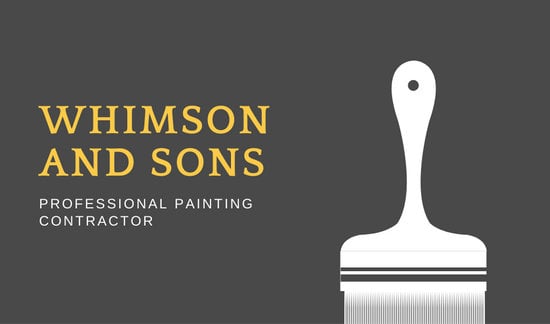Key Seasonal Considerations For Commercial Outside Painting: What You Required To Be Educated Regarding
Key Seasonal Considerations For Commercial Outside Painting: What You Required To Be Educated Regarding
Blog Article
Post Developed By-Fox Rosendal
When you're preparing a commercial external painting task, seasonal elements can make or break your results. You'll intend to take into consideration how temperature level and humidity impact paint application and drying times. Selecting the ideal period can guarantee your paint adheres effectively and lasts longer. But which seasons are really the best for this sort of work? Let's check out the key elements that can affect your job's success.
The Influence of Temperature Level on Paint Application
When you're planning a business external painting task, the temperature can significantly influence how well the paint sticks and dries out.
Ideally, you wish to repaint when temperatures vary in between 50 ° F and 85 ° F. If it's as well chilly, the paint may not cure effectively, causing concerns like peeling off or cracking.
On the other side, if it's as well hot, the paint can dry out as well swiftly, protecting against correct adhesion and leading to an uneven coating.
You need to also take into consideration the time of day; early morning or late afternoon supplies cooler temperatures, which can be extra beneficial.
Constantly examine the manufacturer's recommendations for the certain paint you're utilizing, as they usually give support on the optimal temperature array for ideal outcomes.
Moisture and Its Result on Drying Times
Temperature level isn't the only ecological aspect that affects your business outside painting task; moisture plays a considerable duty as well. High humidity levels can reduce drying out times substantially, impacting the total high quality of your paint task.
When the air is saturated with moisture, the paint takes longer to heal, which can bring about concerns like poor adhesion and a greater danger of mildew growth. If you're painting on a particularly damp day, be prepared for extensive delay times between coats.
It's vital to keep track of local weather conditions and plan appropriately. Ideally, aim for moisture levels between 40% and 70% for ideal drying.
Keeping these consider mind ensures your job remains on track and delivers a long lasting finish.
Best Seasons for Commercial Outside Paint Projects
What's the most effective time of year for your industrial exterior painting projects?
Spring and early fall are typically your best choices. Throughout these periods, temperatures are mild, and moisture levels are frequently reduced, developing ideal conditions for paint application and drying.
Prevent summertime's intense heat, which can trigger paint to dry too rapidly, bring about poor adhesion and coating. Likewise, wintertime's cold temperature levels can hinder appropriate drying out and curing, running the risk of the long life of your paint work.
Aim for days with temperatures between 50 ° F and 85 ° F for optimum outcomes. Keep in interior painters fort worth to check the neighborhood weather report for rainfall, as wet conditions can destroy your job.
https://www.wsj.com/story/why-a-fresh-coat-of-paint-could-mean-more-money-and-a-quicker-home-sale-61dfd7b4 around these factors guarantees your painting job runs smoothly and lasts longer.
Final thought
To conclude, planning your commercial external paint jobs around seasonal considerations can make a substantial difference in the outcome. By organizing job during the ideal temperature levels and moisture levels, you'll ensure far better attachment and drying times. Keep in mind to watch on regional weather prediction and pick the right time of year-- spring and very early autumn are your best options. Taking these steps will certainly help you achieve a resilient and specialist surface that lasts.
